
Painting of the Dutch master of painting Ian Vermeer Delft “Concert”. The size of the painting is 69 x 63 cm, canvas, oil. The action in this picture is remote from the viewer, it is located in the back of the room, on the back wall of which hang two paintings – a pastoral landscape and Vermeer’s often quoted “Brief” by Caravagist Dirk van Baburen. The wall has a harpsichord with an arcade landscape on an open lid.
Harpsichord, stringed key-plucked musical instrument, the predecessor of the piano. Known since the 16th century. There were harpsichords of various forms, types and varieties, including chibalo, virginal, spinet, and clavichyterium. A young girl sitting in profile plays on it. The man, turning his back to the viewer, settled himself on a slanting stool and accompanies the lute. A woman leads a voice party. Unused musical instruments, like a refined still-life, appear on the left on a heavy oak table and on the floor.
Vermeer gives preference to the string ensemble, which has long been considered a symbol of musical harmonies and harmonies. Classes in music in the works of contemporaries Vermeer have always a certain overtones. Music is associated with love, and in the works of Metz, Wall, Van Meerz you can see the figure of Cupid or some other allusion to the romantic relationship of the characters. If the music lesson was represented, it was meant that the teacher shows to the student not only professional interest.
The works of Vermeer are so unambiguous. The environment of the characters indicates the erotic subtext of the picture, but the characters themselves remain detached-neutral. Hanging on the wall, Baburen’s painting “The Shoal” also unites three figures, but the difference in the mood of the characters is striking. Baburen’s painting and peaceful landscapes on the wall and lid of the harpsichord in combination with characters engrossed in music making, rather lead the viewer to the very common belief in those days that music pacifies passions and creates soul harmony.
Vermeer’s musical preferences are unknown, but his contemporaries were fond of French and Italian poetry, ballads were published for Petrarch’s poems, love lyrics were extremely popular. In its content, the picture is close to the picture written at the same time, “The Lady at the Virginia and the Cavalier or the Music Lesson.” But in this work, Vermeer writes less carefully the foreground, the table covered with a carpet is almost completely immersed in the shade, a bright accent stands out only the dress of the girl behind the harpsichord, her white skirt and the already yellow yellow jacket with black trim already familiar in other works.
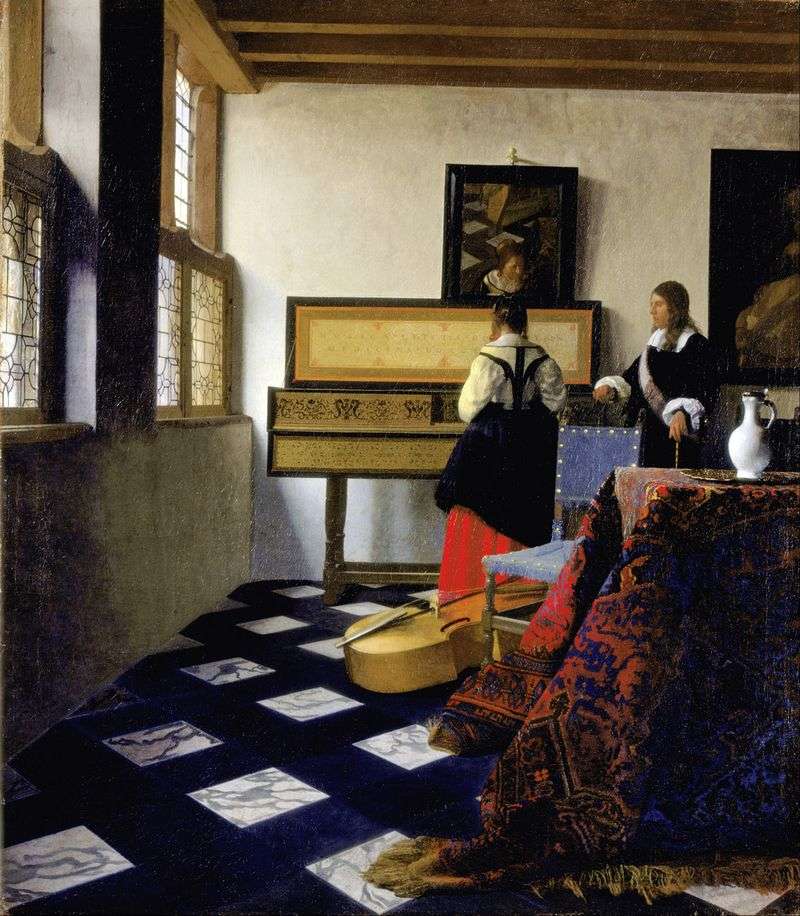 Lady of virginal and cavalier by Jan Vermeer
Lady of virginal and cavalier by Jan Vermeer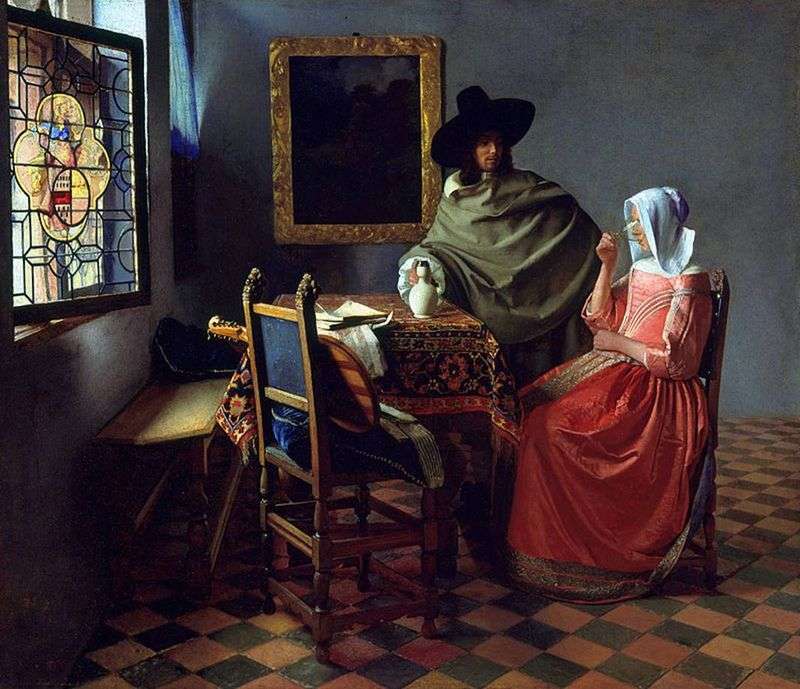 Cavalier, who treats the lady with wine ( Glass of wine ) by Jan Vermeer
Cavalier, who treats the lady with wine ( Glass of wine ) by Jan Vermeer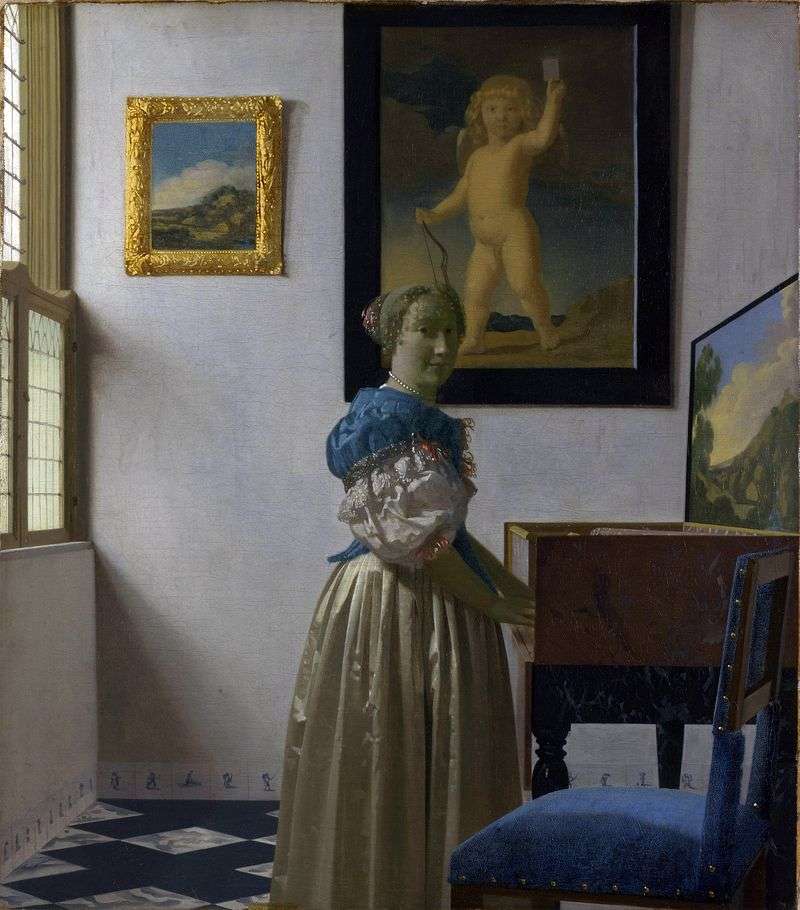 The lady of the virginal by Jan Vermeer
The lady of the virginal by Jan Vermeer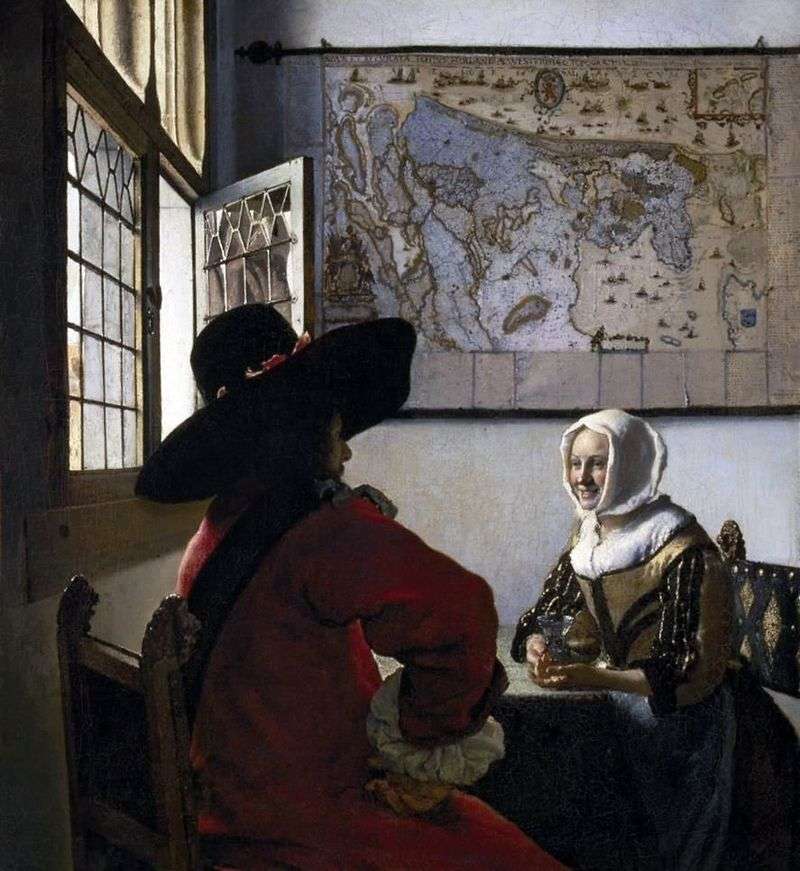 Officer and laughing girl by Jan Vermeer
Officer and laughing girl by Jan Vermeer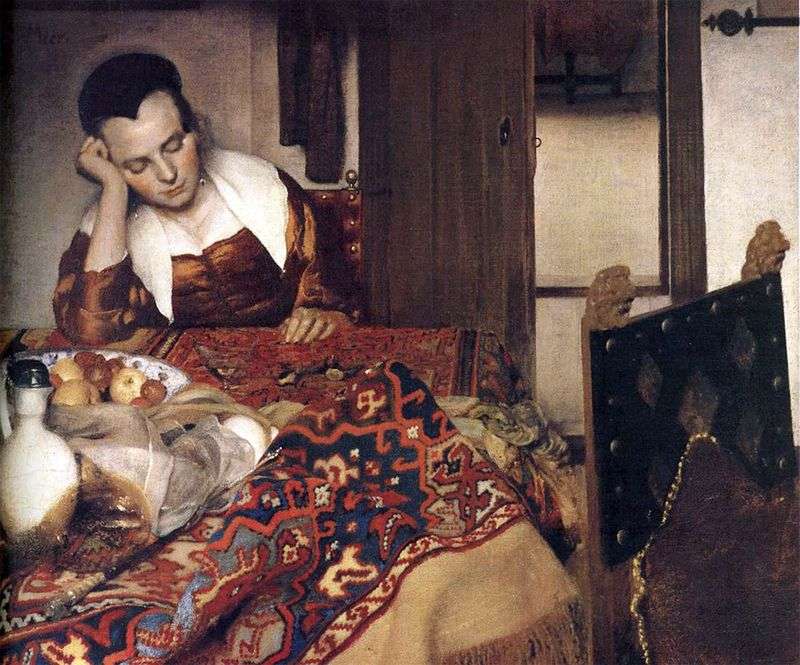 The Sleeping Girl by Jan Vermeer
The Sleeping Girl by Jan Vermeer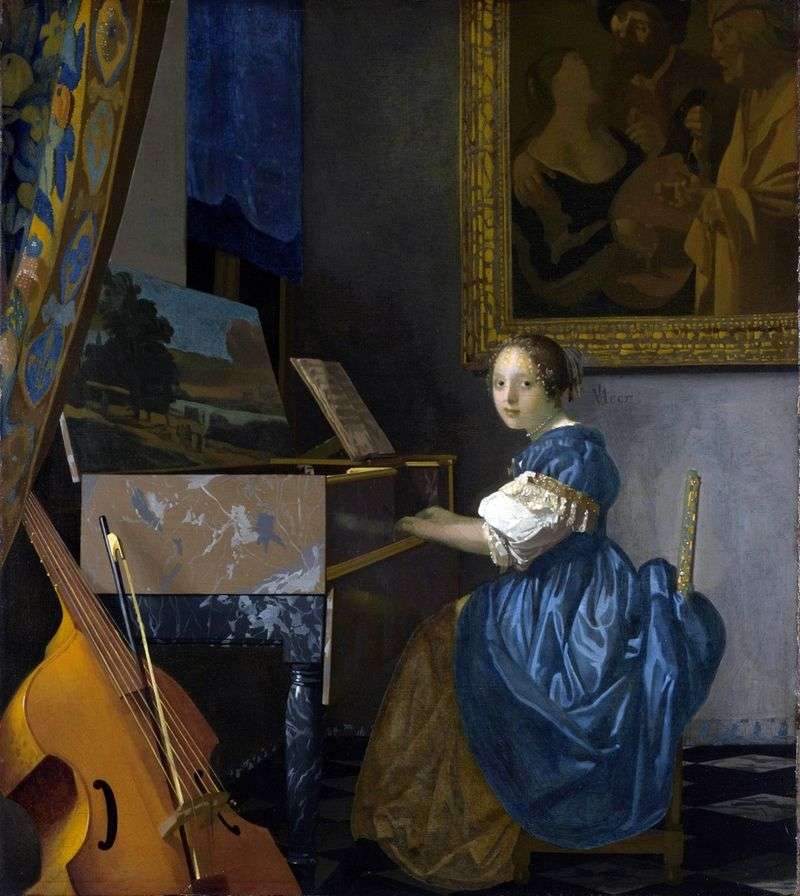 The lady at the back by Jan Vermeer
The lady at the back by Jan Vermeer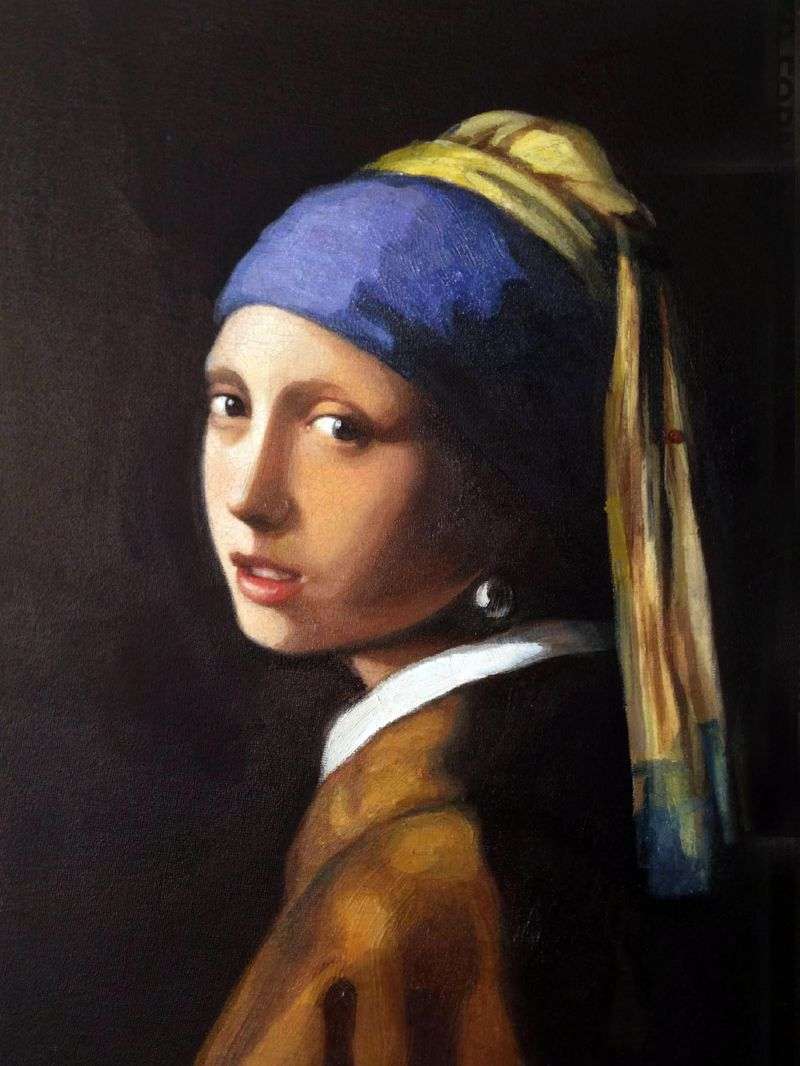 Girl with a Pearl Earring by Jan Vermeer
Girl with a Pearl Earring by Jan Vermeer Concert – Jan Vermeer
Concert – Jan Vermeer